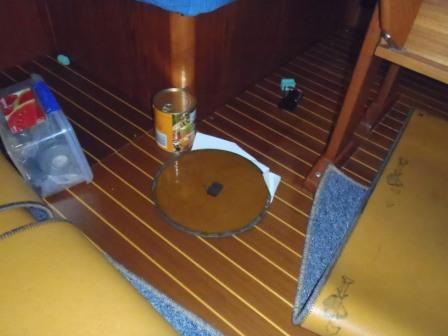A better mousetrap?

VulcanSpirit
Richard & Alison Brunstrom
Mon 8 Jul 2013 09:40
|
Apologies to regular readers, if there are any
left, for my long absence. This is due to several factors including severe
computer problems, poor signal strength, a shortage of suitable
subjects and a general lack of enthusiasm.
Anyway, the up-to-date news is that we have
acquired a rodent. We're in Suva, the capital of Fiji (whence we came in
order to pick up bits for our non-functioning refrigeration system), quite close
to the commercial port, and we think our unwelcome visitor swam out to
us. We think it's a rat rather than a mouse but we're not sure. either way
it's a nightmare. Filthy dirty smelly creatures (their urine is particularly
dangerous) but worst of all is their need to gnaw - in common with all
rodents their incisor teeth grow constantly and need to be ground down by
gnawing. This is irritating on a farm, nasty in a house, but on a boat it can be
devastating especially if they start on the electrical wiring for which they
seem to have a special liking. Boat wiring is extremely complicated, and much of
it built in and thus impossible of access. Tracing and repairing rat damage can
take weeks and cost a small fortune.
Hence the search for a better mousetrap.
Unfortunately moustraps have been largely superceeded by poison bait - less than
ideal on a boat because you will probably end up with a rotting corpse in some
totally inaccessible spot. Also available now are glue traps, made in New
York:
 This is a plastic plate about 0.3m diameter covered
with very sticky glue in the centre of which you put your tasty morsel of bait -
in the example above a square of valuable dark chocolate. Our rat has so far got
entangled in these traps twice and on both occasions has got free, once at the
cost of some fur. Now he won't go near them at all, but of course we have
touched them and trodden in them. A fine mess ensues. Perhaps this idea
joins the long list of failed improvements to the traditional
mousetrap.
And here is the traditional trap:
 On the left is a mousetrap, baited with cheese.
Our rat has twice removed the bait without springing the trap. On the right
is a (larger) traditional rat trap, again baited with cheese. This has a
hair trigger - so the rat has left them alone entirely; this is one clever rat.
In use one has to channel the rat towards the trap using walls, both fixed and
arranged. But so far to no avail.
We are now using poison, seen as the blue lumps in
the upper photo. Our rat has nibbled one, but not enough for a fatal dose, and
certainly not enough to stop him discovering our vegetables which we had thought
secure, and eating or rendering unusable the whole lot. But rather that than the
wiring.
We are being driven mad by this rat; it really is a
quite horrible experience.
|